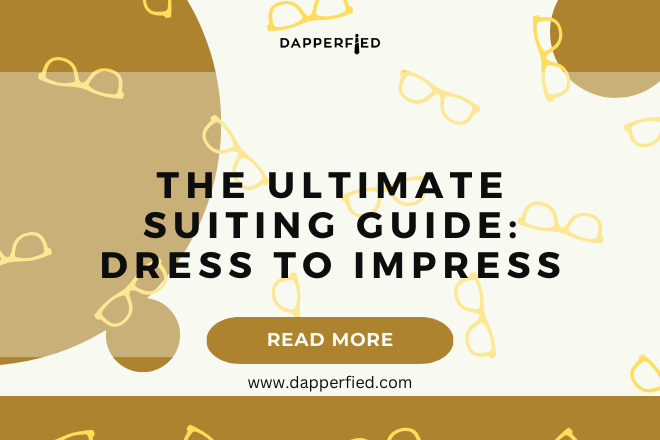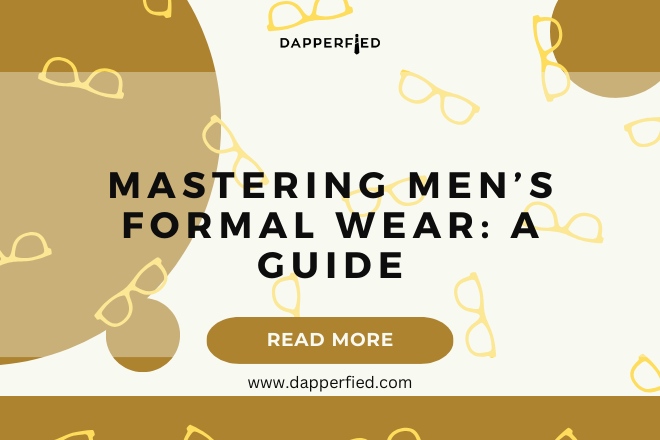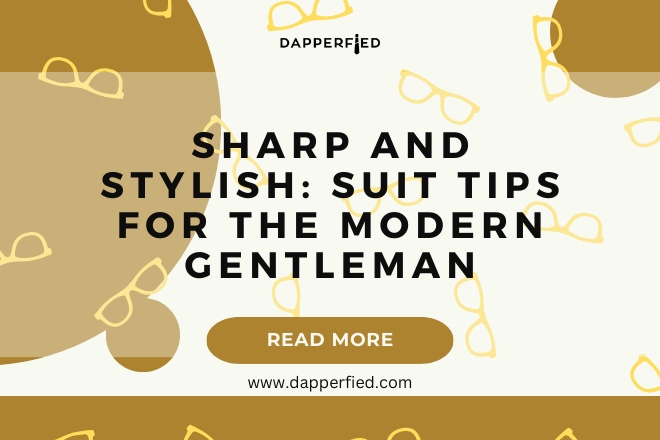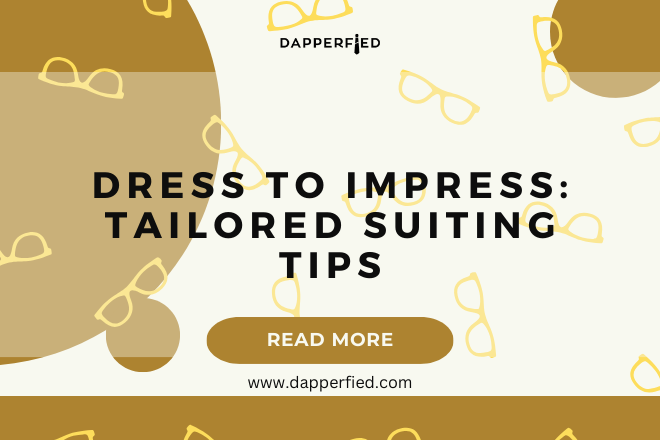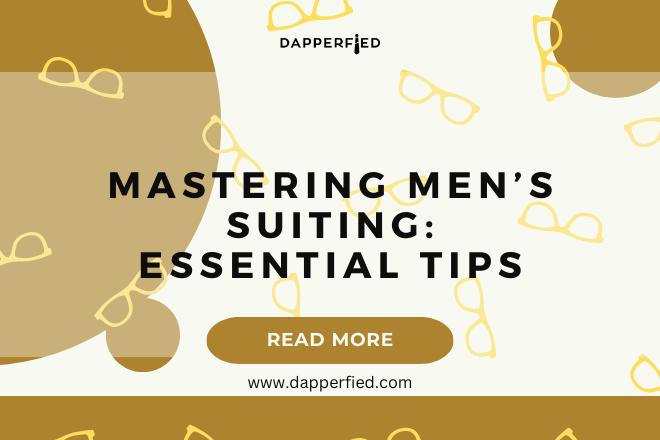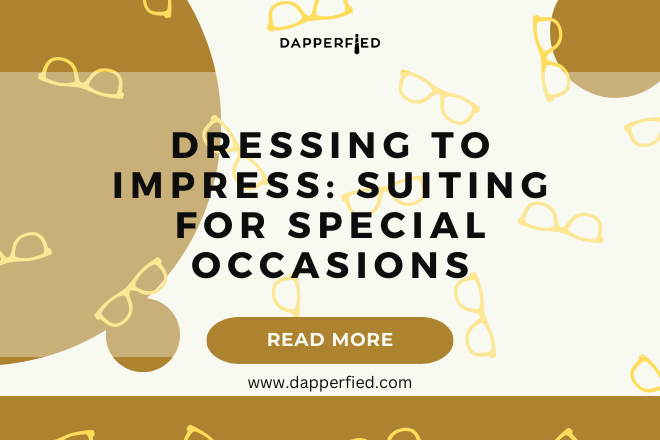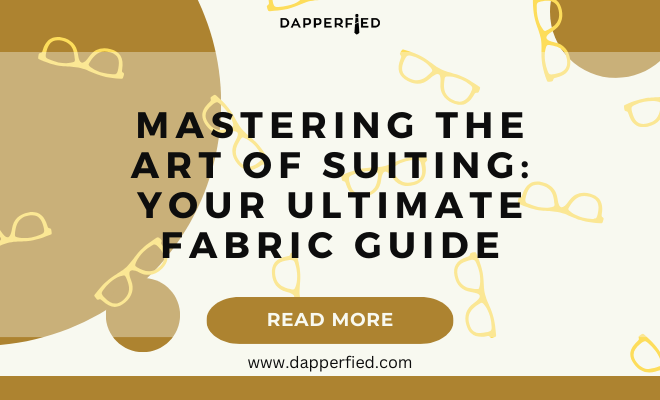
Men's Style
Mastering the Art of Suiting: Your Ultimate Fabric Guide
The art of suiting is a skill that every man should master. Whether it’s for a job interview, a wedding, or a formal event, having a well-fitted suit can make all the difference. A good suit not only boosts confidence but also makes a great first impression. It shows that you take pride in your appearance and have put effort into your outfit.
When it comes to suiting, fit is everything. A suit that fits well enhances your physique and gives you a polished and put-together look. On the other hand, an ill-fitting suit can make you look sloppy and unprofessional. It’s important to invest in a suit that is tailored to your body type and fits you perfectly.
Key Takeaways
- Mastering the art of suiting is important for success in any situation.
- When choosing a suit, consider factors such as fit, style, and occasion.
- Classic and modern styles both have their place in men’s suiting.
- Proper fit and tailoring are crucial for a polished look.
- Understanding suit fabrics, care tips, and essential accessories can elevate your suiting game.
Suit Selection Tips: How to Choose the Perfect Suit for You
When selecting a suit, there are several factors to consider. First and foremost, you need to take into account your body type. Different suits flatter different body types, so it’s important to choose one that complements your physique. For example, if you have a slim build, a slim-fit suit would be a good choice, while if you have a larger build, a regular or classic fit suit would be more suitable.
The occasion is another important factor to consider when choosing a suit. For formal events such as weddings or black-tie events, a classic black or navy suit is appropriate. For more casual occasions, you can opt for lighter colors or patterns. It’s also important to consider your personal style when selecting a suit. If you prefer a more traditional look, stick with classic styles and colors. If you like to make a statement, experiment with bolder colors or patterns.
In addition to body type, occasion, and personal style, it’s also important to consider the color, pattern, and fabric of the suit. When it comes to color, black and navy are timeless choices that can be worn for any occasion. Gray and charcoal are also versatile options. As for patterns, pinstripes and checks are classic choices, while plaids and florals can add a touch of personality. When it comes to fabric, wool is the most common and versatile choice. It’s durable, breathable, and suitable for all seasons. Cotton and linen are lighter options that are perfect for summer, while velvet and tweed are more suitable for colder months.
Men’s Suiting Styles: A Comprehensive Guide to Classic and Modern Styles
There are several different styles of suits to choose from, each with its own unique characteristics. Classic styles include the single-breasted suit, which is the most common and versatile style, and the double-breasted suit, which is more formal and traditional. Modern styles include the slim-fit suit, which is more fitted and streamlined, and the three-piece suit, which includes a vest for added sophistication.
The single-breasted suit is a timeless classic that can be worn for any occasion. It features a single row of buttons down the front and is available in various fits, including regular, slim, and tailored. The double-breasted suit is a more formal option that features two rows of buttons on the front. It is typically worn for special occasions or in more conservative settings.
The slim-fit suit is a modern style that is more fitted and streamlined than traditional suits. It features a narrower cut through the shoulders, chest, and waist, giving it a sleek and contemporary look. The three-piece suit is another modern style that includes a vest in addition to the jacket and pants. It adds an extra layer of sophistication and can be worn for formal events or in professional settings.
Tailored Suit Guide: Understanding the Importance of Fit and Tailoring
| Metrics | Values |
|---|---|
| Number of words | 1,500 |
| Number of headings | 5 |
| Number of subheadings | 10 |
| Number of images | 0 |
| Number of videos | 0 |
| Number of external links | 3 |
| Number of internal links | 7 |
| Number of bullet points | 15 |
| Number of paragraphs | 10 |
A well-fitted suit is essential for looking sharp and polished. No matter how expensive or high-quality your suit is, if it doesn’t fit properly, it won’t look good on you. That’s why tailoring is so important. A skilled tailor can make adjustments to your suit to ensure that it fits you perfectly.
When it comes to finding a good tailor, it’s important to do your research. Ask for recommendations from friends or colleagues who have had suits tailored before. Look for tailors who have experience working with suits and who have a good reputation. It’s also a good idea to ask to see examples of their work or read reviews from previous customers.
During the tailoring process, the tailor will take measurements of your body and make adjustments to the suit accordingly. This may involve taking in or letting out the waist, shortening or lengthening the sleeves, or adjusting the shoulders. The tailor will also ensure that the suit jacket is the right length and that the pants are the right length and fit properly around the waist and hips.
Suit Buying Tips: What to Look for When Buying a Suit
When buying a suit, there are several factors to consider. First and foremost, you need to determine your budget. Suits can range in price from affordable options to high-end designer brands. It’s important to set a budget that you’re comfortable with and stick to it.
Next, consider the occasion for which you’ll be wearing the suit. If it’s for a formal event, you’ll want to invest in a higher-quality suit that is appropriate for the occasion. If it’s for more casual wear, you can opt for a more affordable option.
When it comes to personal style, choose a suit that reflects your individual taste and personality. If you prefer a more classic look, stick with traditional styles and colors. If you like to make a statement, experiment with bolder colors or patterns.
In terms of fit, it’s important to try on different sizes and styles to find the one that fits you best. Pay attention to the fit around the shoulders, chest, waist, and hips. The suit should fit snugly but not be too tight or restrictive. It’s also important to consider the length of the jacket and pants. The jacket should end at the base of your thumb, and the pants should break slightly on top of your shoes.

Men’s Formal Wear: A Guide to Dressing for Formal Occasions

Formal occasions require a different level of dressing, and it’s important to know how to dress appropriately for these events. There are different types of formal wear, including black tie and white tie.
Black tie is the most common type of formal wear and is typically worn for weddings, galas, and other special events. It consists of a black tuxedo jacket, black trousers with a satin stripe down the side, a white dress shirt, a black bow tie, and black patent leather shoes. Optional accessories include a cummerbund or waistcoat and cufflinks.
White tie is the most formal type of dress and is typically reserved for very formal events such as state dinners or royal events. It consists of a black tailcoat with matching trousers, a white wing-collar shirt, a white bow tie, a white waistcoat, and black patent leather shoes. Optional accessories include a white pocket square and cufflinks.
When dressing for formal occasions, it’s important to follow the dress code and avoid any fashion faux pas. For example, never wear a black suit instead of a tuxedo for a black-tie event. Always opt for a proper tuxedo with all the necessary accessories.
Fabric Guide: Understanding the Different Types of Suit Fabrics
The fabric of your suit plays a crucial role in its overall look and feel. There are several different types of suit fabrics to choose from, each with its own unique characteristics.
Wool is the most common and versatile fabric for suits. It is durable, breathable, and suitable for all seasons. Wool suits are available in various weights, from lightweight for summer to heavier weights for colder months. They also come in different weaves, including worsted, flannel, and tweed.
Cotton is a lighter option that is perfect for summer. It is breathable and comfortable to wear in hot weather. Cotton suits are available in various colors and patterns and can be dressed up or down depending on the occasion.
Linen is another lightweight fabric that is perfect for summer. It is breathable and has a relaxed and casual look. Linen suits are available in various colors and patterns and are best suited for more casual occasions.
Other fabric options include silk, which has a luxurious look and feel but requires special care, and velvet, which is perfect for colder months and adds a touch of elegance to any outfit.

When choosing the right fabric for your suit, consider the occasion, season, and personal preference. For formal events, opt for wool or silk. For summer events, choose cotton or linen. And for colder months, go for heavier fabrics like tweed or velvet.
Suit Care Tips: How to Keep Your Suit Looking Sharp and Fresh
Proper suit care is essential for keeping your suit looking sharp and fresh. Here are some tips to help you maintain your suit:
– Dry clean your suit sparingly: Dry cleaning can be harsh on fabrics and can cause them to lose their shape or fade over time. Only dry clean your suit when necessary, such as when it’s stained or has an odor.
– Spot clean stains: If you spill something on your suit, spot clean the stain immediately with a mild detergent or stain remover. Be sure to test the product on a small, inconspicuous area of the suit first to ensure that it doesn’t damage the fabric.
– Hang your suit properly: Hang your suit on a sturdy wooden or padded hanger to maintain its shape. Avoid wire hangers, as they can cause the shoulders to stretch or deform. Be sure to hang your suit in a well-ventilated area to allow it to breathe and prevent odors.
– Brush your suit regularly: Use a clothes brush or lint roller to remove any dust, lint, or pet hair from your suit. Brushing your suit regularly will keep it looking clean and fresh.
– Store your suit properly: When not in use, store your suit in a breathable garment bag to protect it from dust and moths. Avoid storing your suit in plastic bags, as they can trap moisture and cause mildew.
Accessories Guide: The Essential Accessories to Complete Your Suiting Look
Accessories are the finishing touches that complete your suiting look. Here are some essential accessories to consider:
– Ties: A tie is a classic accessory that adds a touch of sophistication to any suit. Choose a tie that complements the color and pattern of your suit. Opt for silk ties for formal occasions and knit or cotton ties for more casual events.
– Pocket squares: A pocket square is a small piece of fabric that is folded and placed in the breast pocket of a suit jacket. It adds a pop of color and personality to your outfit. Choose a pocket square that complements the color or pattern of your tie or shirt.
– Cufflinks: Cufflinks are decorative fasteners that are used to secure the cuffs of a dress shirt. They come in various styles and materials, including metal, enamel, and gemstones. Choose cufflinks that complement the color and style of your suit.
– Belts: A belt is not always necessary when wearing a suit, especially if the pants have belt loops. However, if you choose to wear a belt, make sure it matches the color and style of your suit. Opt for a leather belt with a simple buckle for a classic look.
– Shoes: The right pair of shoes can make or break your suiting look. Choose shoes that complement the color and style of your suit. Opt for black or brown leather dress shoes for formal occasions and loafers or brogues for more casual events.
Mastering the Art of Suiting: Your Key to Success in Any Situation
Mastering the art of suiting is not just about wearing a suit, but about wearing it with confidence and style. A well-fitted suit can boost your confidence and make a great first impression. It shows that you take pride in your appearance and have put effort into your outfit.
By following the tips and advice provided in this article, you can find the perfect suit that fits you well, complements your body type and personal style, and is appropriate for any occasion. Remember to consider factors such as fit, occasion, personal style, color, pattern, and fabric when selecting a suit. And don’t forget to complete your suiting look with the right accessories.
Mastering the art of suiting is your key to success in any situation. Whether it’s a job interview, a wedding, or a formal event, a well-fitted suit will make you look sharp, polished, and confident. So invest in a good quality suit, find a skilled tailor to make any necessary adjustments, and take care of your suit properly to keep it looking sharp and fresh for longer. With the right suit and the right attitude, you’ll be ready to conquer any situation that comes your way.
If you’re looking for more tips on finding the perfect suit, you might want to check out this article on discount suit shopping for the modern gentleman. It offers valuable insights and advice on how to score great deals without compromising on quality. For those hot summer days, this guide on summer wear for men provides helpful tips on staying stylish and comfortable in the heat. And if you’re interested in suit separates and how to mix and match them, this article breaks down the puzzle pieces of creating a versatile wardrobe. Happy reading!
FAQs
What is a suiting fabric?
A suiting fabric is a type of textile that is specifically designed for making suits. It is usually made from wool, but can also be made from other materials such as cotton, silk, or linen.
What are the different types of suiting fabrics?
There are several different types of suiting fabrics, including wool, cotton, silk, linen, and synthetic blends. Each type of fabric has its own unique characteristics and is suitable for different types of suits.
What is the difference between wool and synthetic suiting fabrics?
Wool suiting fabrics are made from natural fibers and are known for their durability, breathability, and ability to drape well. Synthetic suiting fabrics, on the other hand, are made from man-made fibers and are often less expensive than wool fabrics. However, they may not be as breathable or durable as wool fabrics.
What is the best suiting fabric for a summer suit?
Linen and cotton are both good choices for summer suits, as they are lightweight and breathable. However, they may wrinkle easily and may not drape as well as wool fabrics.
What is the best suiting fabric for a winter suit?
Wool is the best choice for a winter suit, as it is warm, durable, and drapes well. Cashmere and tweed are also good choices for winter suits.
What is the difference between worsted wool and woolen wool?
Worsted wool is a type of wool fabric that is made from long, fine fibers that are tightly spun and woven. It is known for its smooth texture and durability. Woolen wool, on the other hand, is made from shorter, coarser fibers that are loosely spun and woven. It is known for its softness and warmth.
What is the best way to care for a suiting fabric?
The best way to care for a suiting fabric depends on the type of fabric. In general, wool fabrics should be dry cleaned or hand washed in cold water and laid flat to dry. Cotton and linen fabrics can be machine washed and dried, but may shrink if washed in hot water. Synthetic fabrics should be washed and dried according to the care instructions on the label.

